 The Forest Margaraça, located in the Town of Benfeita, integrates Biogenetic Reserves Network the Council of Europe, viewed as a site of community interest, due to its unrivaled natural value. The vegetation that characterizes it is oak, arbutus, the ilex, the hazel, cherry, honeysuckle, martagon, the elm and Heather (whose pollen gives a taste of honey so characteristic Açor Mountain), along with a high coverage of mosses, lichens and fungi. The Forest Margaraça has the character of the relic primeval forest vegetation on the slopes schist.
The Forest Margaraça, located in the Town of Benfeita, integrates Biogenetic Reserves Network the Council of Europe, viewed as a site of community interest, due to its unrivaled natural value. The vegetation that characterizes it is oak, arbutus, the ilex, the hazel, cherry, honeysuckle, martagon, the elm and Heather (whose pollen gives a taste of honey so characteristic Açor Mountain), along with a high coverage of mosses, lichens and fungi. The Forest Margaraça has the character of the relic primeval forest vegetation on the slopes schist.
Custom Search
Thursday, September 30, 2010
Visit the Forest Margaraça - Benfeita
 The Forest Margaraça, located in the Town of Benfeita, integrates Biogenetic Reserves Network the Council of Europe, viewed as a site of community interest, due to its unrivaled natural value. The vegetation that characterizes it is oak, arbutus, the ilex, the hazel, cherry, honeysuckle, martagon, the elm and Heather (whose pollen gives a taste of honey so characteristic Açor Mountain), along with a high coverage of mosses, lichens and fungi. The Forest Margaraça has the character of the relic primeval forest vegetation on the slopes schist.
The Forest Margaraça, located in the Town of Benfeita, integrates Biogenetic Reserves Network the Council of Europe, viewed as a site of community interest, due to its unrivaled natural value. The vegetation that characterizes it is oak, arbutus, the ilex, the hazel, cherry, honeysuckle, martagon, the elm and Heather (whose pollen gives a taste of honey so characteristic Açor Mountain), along with a high coverage of mosses, lichens and fungi. The Forest Margaraça has the character of the relic primeval forest vegetation on the slopes schist.
Etiquetas:
Arganil,
Benfeita,
Coimbra District,
Forest,
Protected Landscapes,
Sierra Açor
Visit the Church of St. Cecilia - Benfeita
Etiquetas:
Arganil,
Benfeita,
Churches,
Coimbra District
Visit the Church of slums - Benfeita
Etiquetas:
Arganil,
Benfeita,
Churches,
Coimbra District
Visit the Source of the Flies - Benfeita
Etiquetas:
Arganil,
Benfeita,
Coimbra District,
Sources
Visit the Fountain of corral - Benfeita
Etiquetas:
Arganil,
Benfeita,
Coimbra District,
Sources
Tuesday, September 28, 2010
Visit Cascade of Fraga da Pena - Benfeita
 The Cascade of Fraga da Pena, located in Woods Margaça, Town of Benfeita, is a mountain waterfall. This cascade is a total height of more than seventy meters (the main gap of Fraga da Pena has 20 m).
The Cascade of Fraga da Pena, located in Woods Margaça, Town of Benfeita, is a mountain waterfall. This cascade is a total height of more than seventy meters (the main gap of Fraga da Pena has 20 m).This cascade must originate in a geological accident and is considered one of the largest gains among the natural resources of the protected landscape of the Serra do Goshawk. The waters that crashed this cascade run by a very tight mountain valley, thus giving rise to a micropaisagem, which emerges suddenly endowed with abundant vegetation cover the shale.
Etiquetas:
Açor Mountain,
Arganil,
Benfeita,
Cascades,
Coimbra District,
Matas,
Mountains
Visit the Chapel of Our Lady of the Assumption - Benfeita
Etiquetas:
Arganil,
Benfeita,
Chapels,
Distrito de Coimbra
Visit the Chapel of St. Simon - Benfeita
Etiquetas:
Arganil,
Benfeita,
Chapels,
Distrito de Coimbra
Visit the Chapel of St. Bartholomew - Benfeita
Etiquetas:
Arganil,
Benfeita,
Chapels,
Distrito de Coimbra
Visit the Chapel of Our Lady of Needs - Benfeita
Etiquetas:
Arganil,
Benfeita,
Chapels,
Distrito de Coimbra
Monday, September 27, 2010
Visit the Chapel of Nossa Senhora da Guia - Benfeita
Etiquetas:
Arganil,
Benfeita,
Chapels,
Distrito de Coimbra
Visit the River Beach Barril de Alva
Etiquetas:
Arganil,
Barril de Alva,
Beaches,
Coimbra District
Visit the River Beach Urtigal - Barril do Alva
 The river beach Urtigal located in the Town of Barril de Alva and is situated on the right bank of the river Alva.
The river beach Urtigal located in the Town of Barril de Alva and is situated on the right bank of the river Alva.In the landscape will reveal their dams with particular reference to the existing beach at the river "URTIGAL", about 1 km, consisting of attractive recreational areas, clear water and white sands.
His dam has created an extensive "water mirror", providing recreational activities and bathing.
The surrounding area has an extensive wooded area, a privileged space for relaxing.
Etiquetas:
Arganil,
Barril de Alva,
Beaches,
Coimbra District,
Rio Alva
Sunday, September 26, 2010
Visit Bridge Barril de Alva
Etiquetas:
Arganil,
Barril de Alva,
Bridges,
Coimbra District
Visit Source Barril de Alva
Etiquetas:
Arganil,
Barril de Alva,
Distrito de Coimbra,
Sources
Visit the Parish Church of Arganil
 The Parish Church has as its patron St. Arganil Gens.
The Parish Church has as its patron St. Arganil Gens.The present building derives from the late seventeenth century. The oldest part is the chapel of Fonsecas.
The front of the line and corners apilastrados gable stonework granite, rectangular portal is dominated by a polygonal niche and a spyglass.
The body is paneled coverage in each panel containing a painting hagiographic, implementing artificial, from de Oliveira Thunder, performed in 1762.
The main altarpiece is from the late seventeenth century, with later renovations.
On the left is the chapel set up by the village chief captain, Pero da Fonseca, whose land was demarcated on November 12, 1658. In this chapel are two wooden sculptures of the seventeenth century: the Lady of the Conception and St. Peter.
The chapel of the Sacrament (the same side) is the first half of the nineteenth century. There are two images of eighteenth-century S. Francisco and San Antonio.
The tower of the church is separated from the Church and at a higher level, so it is a very interesting urban reason.
Etiquetas:
Arganil,
Arganil (Town),
Chapels,
Churches,
Coimbra District,
Oliveira Thunder,
Painting
Visit the Church of St. Peter - Arganil
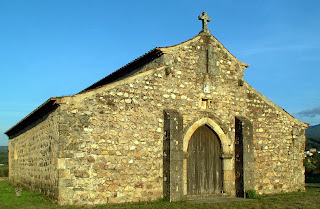 The Church of St. Peter, located in the Town of Arganil, is the oldest monument in the county. Its construction dates from the late thirteenth century. It is located outside the village of Arganil, near the river Alva in an area of archaeological finds.
The Church of St. Peter, located in the Town of Arganil, is the oldest monument in the county. Its construction dates from the late thirteenth century. It is located outside the village of Arganil, near the river Alva in an area of archaeological finds.Founders had the grantees of the land, Jonathan Roberts and his wife Redondo D. Marine Afonso.
The building of massive construction in garnito and austere divided into three naves with apsidal chapels, transept and without coverage only of wood.
The building is made of irregular blocks of predominantly boulder rolled thick, except for corners, openings and arches are of stone, made mostly of local sandstone.
 The three naves are divided by two arcades of three bays. Are simple arcs, squares and just crackpots.
The three naves are divided by two arcades of three bays. Are simple arcs, squares and just crackpots.The doors, the main and two side arches are broken and cut edges.
The most significant is the image of S. Peter, the fifteenth century, in limestone.
This Church is classified as National Monument
Etiquetas:
Arganil,
Arganil (Town),
Churches,
Coimbra District,
Rio Alva,
the National Monument
Visit the Chapel of Nossa Senhora do Monte Alto - Arganil
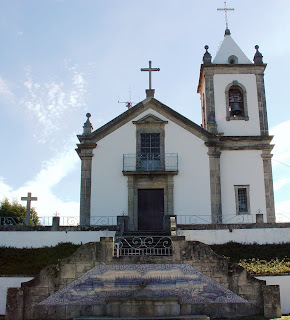 The Chapel of Our Lady of Mount Alto, located in the parish of Arganil, is framed in the majestic mountain with the same name.
The Chapel of Our Lady of Mount Alto, located in the parish of Arganil, is framed in the majestic mountain with the same name.It was built by Francisco Pires, son of Domingos Pires and his brother John in Coimbra in 1521. In the eighteenth century the building was renovated by assuming that the current building is 1796.
It has a simple facade, door and rectangular framed in pilasters, having turned the balcony of the choir, which finishes in a pediment, on pilaster quoins, gable eaves and sub-freestone.
The main altarpiece and the side of ornate shell, following the regional brand to time.
In the Steps of access to the temple there is a tiled panel.
In this chapel is celebrated each year on August 15 (Day of Our Lady of Conception) which is traditionally a celebration of Arganilenses.
Etiquetas:
Arganil,
Arganil (Town),
Chapels,
Distrito de Coimbra,
Tiles
Saturday, September 25, 2010
Visit the Church of Mercy - Arganil
 The Church of Mercy of Arganil, located in the town center, one of its most characteristic streets, was part of the boundaries of the Solar Countess of Reeds and rebuilt at the end of the century. XVIII, including the frontage.
The Church of Mercy of Arganil, located in the town center, one of its most characteristic streets, was part of the boundaries of the Solar Countess of Reeds and rebuilt at the end of the century. XVIII, including the frontage.The architecture is strikingly austere.
This church was used as an ammunition depot troops of Wellington in 1809 and in 1811 the French made it stable, in the context of the Napoleonic wars.
The church that we see today, with the restoration of 1777, presents longitudinal plan, a single ship, in corners and truss spar portal connected to a large window with balcony, topped by the family coat of arms with the royal crown. Merged in front is a square tower with bell-openings and access doors. In the nineteenth century was restored.
Etiquetas:
Arganil,
Arganil (Town),
Churches,
Coimbra District
Visit the Theatre Alves Coelho - Arganil
Etiquetas:
Arganil,
Arganil (Town),
Aureliano Lima,
Distrito de Coimbra,
Painting,
Sculptures,
Theatre,
William Philip
Visit the Chapel of Our Lord's Agony - Arganil
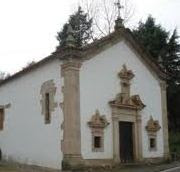 The Chapel of Our Lady of Slope, located in the Town of Arganil, is an eighteenth century building, massive, where the abundant stonework, has rectangular openings.
The Chapel of Our Lady of Slope, located in the Town of Arganil, is an eighteenth century building, massive, where the abundant stonework, has rectangular openings.The main door is framed pilasters in connection with the choir balcony, flanked by shutters with finial pediment.
Closes the arch is a strong iron grating, composed of rods and twisted little band to make the connections.
Etiquetas:
Arganil,
Arganil (Town),
Chapels,
Distrito de Coimbra
Visit the Chapel of Our Lady of Slope - Arganil
 The Chapel of Our Lady of Slope, located in the Town of Arganil, is an eighteenth century building, massive, where the abundant stonework, has rectangular openings.
The Chapel of Our Lady of Slope, located in the Town of Arganil, is an eighteenth century building, massive, where the abundant stonework, has rectangular openings.The main door is framed pilasters in connection with the choir balcony, flanked by shutters with finial pediment.
Closes the arch is a strong iron grating, composed of rods and twisted little band to make the connections.
Etiquetas:
Arganil,
Arganil (Town),
Chapels,
Distrito de Coimbra
Visit the Church of Anceriz
Etiquetas:
Anceriz,
Arganil,
Churches,
Coimbra District
Visit the Chapel of St. Peter - Anceriz
Etiquetas:
Anceriz,
Arganil,
Chapels,
Distrito de Coimbra
Friday, September 24, 2010
Visit the Chapel of Our Lady of the Foot of the Cross - Anceriz
Etiquetas:
Anceriz,
Arganil,
Chapels,
Distrito de Coimbra
Visit Serra's Goshawk - Arganil
 The Açor Mountain, located in the municipality of Arganil, constitutes together with the Star and Lousã, all the mountain chains that, practically, Portugal is divided in half. It is part of the ridge that crosses the Iberian plateau. It is protected landscape since 1982 (373 hectares) and was a rare enclave of natural vegetation and slope shales. Partly covered by pine forests, mountain, which lies within the municipality of Arganil, hiding details of rare beauty.
The Açor Mountain, located in the municipality of Arganil, constitutes together with the Star and Lousã, all the mountain chains that, practically, Portugal is divided in half. It is part of the ridge that crosses the Iberian plateau. It is protected landscape since 1982 (373 hectares) and was a rare enclave of natural vegetation and slope shales. Partly covered by pine forests, mountain, which lies within the municipality of Arganil, hiding details of rare beauty.Represents a set of high landscape value, mainly due to two relics of the Forest and Maragaça Fraga da Pena. Scattered in the mountains are many villages lost in time, often located in remote and difficult access.
Mata Margaraça is an example of such natural beauty and is one of the rare specimens of natural vegetation
 on steep schist from the center of the country. Species like chestnut, CARVALHEIRO, and some laurel cherry laurel and pastries, make up the flora of this protected landscape area. Among the fauna may highlight-Striped salamander and lizard-of-water. The steep valleys that hide water lines that run down towards the Ceira and Alva, are prone to falls. Accordingly, we highlight the great waterfall of Fraga da Penha.
on steep schist from the center of the country. Species like chestnut, CARVALHEIRO, and some laurel cherry laurel and pastries, make up the flora of this protected landscape area. Among the fauna may highlight-Striped salamander and lizard-of-water. The steep valleys that hide water lines that run down towards the Ceira and Alva, are prone to falls. Accordingly, we highlight the great waterfall of Fraga da Penha.
Etiquetas:
Açor Mountain,
Arganil,
Distrito de Coimbra,
Matas,
Mountains
Visit the Rio Alva - Arganil
 The Alva River is a tributary of the Mondego River, rising in the west slope of Serra da Estrela, covers about 106 km before flowing into the Rio Mondego.
The Alva River is a tributary of the Mondego River, rising in the west slope of Serra da Estrela, covers about 106 km before flowing into the Rio Mondego.In his bed traverses a path winding between the slopes of the Serra da Estrela and Serra do Goshawk, where he dug up his bed. Throughout the Municipality of Arganil where leaves magnificent landscapes. The river Alva is broken in St. Maarten to the Cork dam Pillowcases after covering 78 km This dam had a maximum reduction of around 500m3 / s.
It is a river known to have a very high variation in its flow as it has a very low flow in summer, and very high in winter.
Etiquetas:
Arganil,
Coimbra District,
Mondego River,
Rio Alva,
Rivers,
Serra da Estrela,
Serra do Goshawk
Thursday, September 23, 2010
Visit Arganil
 The Municipality of Arganil, the district of Coimbra. It is bordered on the north by Plank and Oliveira do Hospital, on the west by Penacova and Vila Nova de Poiares, the south by Gois and Pampilhosa da Serra, and this for Covilhã and SEIA, the district of Guarda, and is still bounded by the East River cial and north by the River Alva. It has an area of 332.9 km2, which is divided into 18 parishes: Anseriz, Arganil, Barrel of Alva, Benfeita, Celavisa, tree stumps, Cerdeira, Coja, Folque, Moura da Serra, Piódão, Orchards, Pombeiro da Beira, S. Martin Cork, Sarzedo, Secarias, Teixeira and Vila Cova do Alva.
The Municipality of Arganil, the district of Coimbra. It is bordered on the north by Plank and Oliveira do Hospital, on the west by Penacova and Vila Nova de Poiares, the south by Gois and Pampilhosa da Serra, and this for Covilhã and SEIA, the district of Guarda, and is still bounded by the East River cial and north by the River Alva. It has an area of 332.9 km2, which is divided into 18 parishes: Anseriz, Arganil, Barrel of Alva, Benfeita, Celavisa, tree stumps, Cerdeira, Coja, Folque, Moura da Serra, Piódão, Orchards, Pombeiro da Beira, S. Martin Cork, Sarzedo, Secarias, Teixeira and Vila Cova do Alva.Weather
The climate of Arganil County has a generally similar temperatures to those recorded in the center of the country. Average annual temperatures range between 15 º -16 º C, with hot summers (20-22 ° C) and mild winters (9-11 ° C). Represent the characteristics of a continental climate, with sharp features Mediterranean, the rains are more frequent and abundant in late autumn, winter and early spring.
Flora
The flora of the Municipality of Arganil initially consisted of traditional hardwood species such as oak, chestnut, strawberry trees, especially softwood species like pine, but in recent decades these species have been replaced by exotic species, of which Eucalyptus is the most significant example, but to highlight the existing vegetation coverage in the Protected Area of Serra do Goshawk (APSA), which contains two well defined zones, the Forest Margaraça and Fraga da Pena, where there is a cascading waterfall whose is about 70 meters tall.
The Fauna
The fauna, in regard to mammals is to highlight the presence of the boar, genets and mongoose, for the birds, we found the hawk, owl of the woods, eagle, eagle wing round, black crow, wood pigeon, turtle dove and bullfinch , are also some species of herpetofauna, would stress is that the salamander and lizard tail compressed water.
Economy
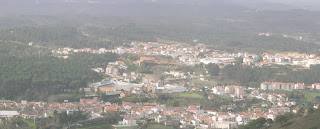 From the economic point of view, its origins are primarily agricultural, despite the difficulties of making a profitable agriculture, given the conditions of the hilly terrain.
From the economic point of view, its origins are primarily agricultural, despite the difficulties of making a profitable agriculture, given the conditions of the hilly terrain.With improved accessibility, have seen the establishment of some industries in industrial areas, particularly in the Industrial Pole of Relvinha, where there is a growing supply of industrial infrastructure.
Brief History of County
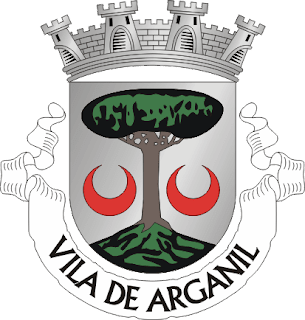 The numerous historical references to the Municipality of Arganil and archaeological remains dating back to one of the earliest stages of human history, the Chalcolithic - Necropolis of windmills - and the Roman Period - Roman Military Camp of the Lomba Cano. The adjacent hill once housed a village Lusitanian who later "gave" rise to well-armed Roman garrisons. Established the camp in the castro, strategic and impregnable place, the army remained stationed there about one hundred years, possibly at the crossroads of centuries I before and after Christ.
The numerous historical references to the Municipality of Arganil and archaeological remains dating back to one of the earliest stages of human history, the Chalcolithic - Necropolis of windmills - and the Roman Period - Roman Military Camp of the Lomba Cano. The adjacent hill once housed a village Lusitanian who later "gave" rise to well-armed Roman garrisons. Established the camp in the castro, strategic and impregnable place, the army remained stationed there about one hundred years, possibly at the crossroads of centuries I before and after Christ.Was granted a charter to Arganil in 1114, early in the twelfth century, by granting the Bishop of Coimbra. Passed again in 1394 for possession of Bishops Coimbra.D. Manuel I, on June 8, 1514 granted a new charter or 'new card' to the town of Arganil, which today is stored in City Hall, although without the title page.
In 1809 the village was marked by the French invasion, the troops having been stationed in Wellington at the Chapel of Mercy, which became their refuge and ammunition depot.
In February and March 1811, the French Massena left a trail of death and pillage in Arganil, the point of being considered one of that in Portugal suffered most from the invasion that "bloody Corsican (Napoleon) vomited on the Peninsula Hispanic. "
In the 30s, 40s and 50s of this century, is born the Regionalist movement, especially in the capital, led by those who had left here in search of better living conditions. This is a spontaneous movement in order to raise funds to carry out works and improvements in the villages that saw the birth and that the Government did not run. Were roads, water supplies, etc.. that this movement has financed, in most cases, in its entirety. All this movement (Committees, Unions, Leagues of Improvements) grew around the House County Arganil, still in fervent activity.
What to Visit
In County
Rio Alva
Açor Mountain
In the Town of Anceriz
Chapel of Our Lady at the Foot of the Cross
Chapel of Saint Anthony
Chapel of St. Peter
Church
In the Town of Arganil
St. Peter's Church of Arganil
Church of Mercy of Arganil or Santa Isabel
Chapel of Our Lord's Agony
Pillory Arganil
Chapel of Nossa Senhora da Ladeira
Church of Nossa Senhora do Monte Alto
Parish Church
Theatre Alves Coelho
In the Town of Barril do Alva
Source
Bridge
Fluvial Beach of Urtigal
River Beach barrel Alva
In the Town of Benfeita
Chapel of St. Rita
Capela do Senhor dos Passos
Monument to Lady of the Way
Jardim Gonçalves Leonardo Mathias
Monument Dr. José Simões Dias
Alminhas Bridge Fundeira
Chapel of Nossa Senhora da Guia
Chapel of Our Lady of needs
Chapel of St. Bartholomew
Chapel of St. Simon
Chapel of Our Lady of the Assumption
Cascade Fraga da Pena
Fountain of slums
Source of flies
Church of slums
Church of Santa Cecilia
Forest of Margaraça
Fraga Bridge Pen
River Beach
Peace tower
In the Town of Celavisa
Chapel of Our Lady of Good Voyage
Chapel of Saint Anthony
Picnic Park
In the Town of blocks
Park monk
Well of Cespa
Fluvial Beach of Pejadouro
In the Town of Cerdeira
Capela de Santo Amaro
Chapel of Our Lady of Good Voyage
Fountain
Source Santo Amaro
Church
In the Town of Côja
Almas
Chapel of St. Anthony
Chapel of the Lord's Sepulchre
Chapel of Nossa Senhora da Ribeira
Source
Church
River Beach Mills Alva
Pillory
Roman Bridge
River Beach Côja
In the Town of Folque
Chapel of St. Peter
Monastery Folque
In the Town of Moura da Serra
Souls of Valado
Chapel Sorgaçosa
Chapel of the ditch
Fountain of ditch
Source casarias
Source of the top
Pool Sorgaçosa
Tank Community Casarias
Tank Community Valado
In the Town of Piódão
Typical village Piódão
Typical village of Chãs Mares
Church Piódão
Chapel of St. Sundays
Cascade Ports Up
Church of St. John the Baptist
Water Mill Quinta dos Coicis
Museum Piódão
Ponte da Foz de Mares
River Beach in Cha Mares
River Beach Piódão
In the Town of Orchard
Fountain of Orchards
Foz da Fonte da Moura
Church
Ponte da Foz da Moura
Bridge Orchards
River Beach Orchards
Clock tower
In the Town of Pombeiro da Beira
Chapel of the Holy Clover
Chapel of Our Lady of Loureiro
Dam of Pillowcases
Chapel of the Holy Queen
Church
Pillory
In the Town of S. Martin Cork
Chapel of St. Peter
Dam of Pillowcases
Capela de Santo Amaro
Church
Bridge Mucela
In the Town of Sarzedo
Fountain Square of the village square
Church
Bridge
River Beach Boat Valeiro
In the Town of Secarias
Chapel of St. Michael
Church
River Beach of Cascalheira
River Beach Peneda Talhada
In the Town of Teixeira
Bridge Cartomilo
Chapel of Our Lady of Good Voyage
In the Town of Vila Cova do Alva
Almas
Church
Church of Mercy
Pillory
Bridge
Convento de Santo Antonio do Alva
Gastronomy
Appetizers
Corn Bread from Arganil
Ham
Fresh Cheese Sierra Açor
Sheep cheese from the Serra do Goshawk
Goat Cheese Sierra Açor
Cottage cheese
Soups
Soup nuts
Unto broth
Caldo Verde
Chicken Broth with Mountainous
Papa-Laberça
Soup to Nuts
Soup Stew
Bean soup
Soup Black-eyed Peas
Green Bean Soup
Wild radish soup
Soup turnip and Grand
Soup Serrana
Fish Dishes
Rice Sardines à Moda da Serra
Baked Cod with potatoes
Cod Oil
Bacalhau à Moda Christmas Sierra
Codfish S. Martin
Cod Ball
Sardine Ball
Fish River
Raw Cod Salad
Escabeche of Sardines
Trout with Rice Sprouts
Trout of the clumps to Fashion
Sierra Trout to Fashion
Meat Dishes
Rice Cabidela
Rice Pombo Bravo Manor
Beef Ball Convent Folque
Meat ball
Lamb Stuffed with blocks of Fashion
Stuffed belly to Fashion Folque
Stuffed belly to Fashion Vila Cova de Alva
Stuffed with Goat Fashion Barril de Alva
Cabrito the Serrana
Carolos with Fried Bacon
Chanfana
Coelho Bravo to Fashion Arganil
Stew Fashion Arganil
Chicken Fashion S. Martin
Hen the Florida Serrana
Where to Stay
In the Town of Arganil
Hotel Arganil ***
Residential Canary ****
Municipal Park Camping Arganil
Improvements Commission for Monte Redondo
In the Town of Côja
Pension Flower Alva
Residential Victocális
Côja Camping (Camping and Mountaineering Federation of Portugal)
In the parish of Piódão
Estalagem do Piódão - INATEL
House Bakery
House of Algar
Union Progressive Chãs D 'Mare
Holiday Village - Improvements Committee Piódão
House of Malhadinhas
In the Town of Secarias
Casa do Rio
In the Town of orchards
Camping Bica (Parish of Orchards)
House of Glory
Casa de Campo
In the Town of Moura da Serra
Improvements Commission for Moura da Serra
In the Town of Benfeita
Improvements Commission for slums
Where to Eat
In the Town of Arganil
My Restaurant
The Grid
Piri-Piri Grill (Take Away)
Pizzeria Argus
Filipe
The Custard
Charles
Mont'Alto Restaurant Bar
Marujinho Beiras
Regional Tavern
Tijoana
Shale
In the Town of Sarzedo
The Mill
Impala
Aroma Park
In the Town of Secarias
The Umbrella of Alva
St. Martin Parish in Cork
Beira Alva
Domino
The Corner
Youngest
In the Town of Côja
D. Ramiro II
Lagar do Alva
Prensa da Ribeira
Balconies of Alva
In the Town of Barril do Alva
Manjar Barril de Alva
In the Town of Piódão
The Fontinha
Piódão XXI
Etiquetas:
Arganil,
Ceira River,
Coimbra District,
Covilhã,
D. Manuel,
Gois,
Oliveira do Hospital,
Pampilhosa da Serra,
Penacova,
Plank,
Rio Alva,
Rivers,
Seia,
Vila Nova de Poiares
Tuesday, September 21, 2010
Visit the Monument to Moliceiro - Pebble
Etiquetas:
Coimbra District,
Mira,
Monument,
Pebble
Visit the Statue of Mother Gandaresa - Pebble
During decades when the harshness of life and poor soil gandareses forced men to seek their fortunes elsewhere, was the lone woman, usually the mother of a large number of children (arriving in overcoming a dozen) that without the man had reap, sow, make the crops, treat the house and educate their children.
Etiquetas:
Distrito de Coimbra,
Mira,
Pebble,
Statues
Visit the Cruise Pebble
Etiquetas:
Coimbra District,
Cruises,
Mira,
Pebble
Monday, September 20, 2010
Visit Gravel Beach - Praia de Mira
Etiquetas:
Beaches,
Coimbra District,
Mira,
Mira Beach
Visit Praia de Mira
 Praia de Mira located in Town with the same name and entered in the Silver Coast, stretches a sandy beach, where stand the awnings and stalls with brightly colored fabrics.
Praia de Mira located in Town with the same name and entered in the Silver Coast, stretches a sandy beach, where stand the awnings and stalls with brightly colored fabrics.The search for Praia de Mira has grown over the years, and throughout the surrounding urban and commercially accompanied this preference.
The surrounding area is characterized not only by the beauty of the sea, but the pine forest, the lagoon and the dunes preserved by existing vegetation.
The provision of street trading, contrasts with the tranquility of the lagoon, about two hundred meters, where you can make nice walks gull.
Praia de Mira is also marked by art Xávega and a little on the entire coast is possible to discern small boats in full swing.
Etiquetas:
Beaches,
Coimbra District,
Mira,
Mira Beach
Sunday, September 19, 2010
Visit the Ethnographic Museum of Praia de Mira
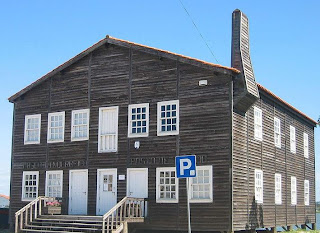 The Ethnographic Museum of Praia de Mira was inaugurated on 5 October 1997, with the main collection to collection of pieces made by the Cultural and Recreational Centre of Praia de Mira and the City of Mira.
The Ethnographic Museum of Praia de Mira was inaugurated on 5 October 1997, with the main collection to collection of pieces made by the Cultural and Recreational Centre of Praia de Mira and the City of Mira.The original purpose of research, collection and archiving of materials and testimonies related to experience local culture and reconstructs the typical housing - "Haystack" - this coastal area.
It represents a tribute to the people of Mira and its origins.
The Museum is an architecture building blockhouse, commonly known as "Haystack."
Arranged over two floors, opened on the landscape takes place in an intimate space dominated by pond Barrinha Mira.
On the ground floor are the Tourist Office and a temporary exhibition room, which communicates with space for permanent exhibitions: the origins of Praia de Mira, through the architectural heritage, addressing fishing gear at sea and the life of fishermen.
On the 1st Floor discusses the behavior of local populations, since the regional dress at the most salient manifestations of how exercising the profession, agriculture and fisheries, how they lived and how they related.
Etiquetas:
Coimbra District,
Mira,
Museums,
Praia de Mira
Visit the New Church of Praia de Mira
Etiquetas:
Churches,
Coimbra District,
Mira,
Praia de Mira
Visit the Statue tribute to the people of Praia de Mira (Fishermen)
Etiquetas:
Andre Alves,
Coimbra District,
Mira,
Praia de Mira,
Sculptures,
Statues
Visit the Chapel of Praia de Mira
Etiquetas:
Chapels,
Coimbra District,
Mira,
Praia de Mira
Visit the Canal de Mira - Mira Beach
Etiquetas:
Coimbra District,
Mira,
Praia de Mira,
Ribeiras
Saturday, September 18, 2010
Visit Barrinha Lagoon of Mira - Praia de Mira
 The Lagoon Barrinha Mira is a Portuguese coastal lagoon, located in Praia da Mira, which lies about 250 meters away from the Atlantic Ocean. Despite the proximity to the sea, the Lagoon Barrinha Mira is a freshwater lake, fed continuously by a small stream!
The Lagoon Barrinha Mira is a Portuguese coastal lagoon, located in Praia da Mira, which lies about 250 meters away from the Atlantic Ocean. Despite the proximity to the sea, the Lagoon Barrinha Mira is a freshwater lake, fed continuously by a small stream!The lake has a rounded configuration and is framed by trees and sand dunes.
This coastal lagoon is the result of a slow process of accumulation and ancient natural formation of sand banks, which led to its
 separation from the sea, followed by another natural process of slow and continuous siltation. Over the past 200 years, there has been an intense ongoing process of landfill and land reclamation by man to obtain land for housing or agriculture, which has only stopped for about 10-20 years ago and decreased significantly the area occupied by Barrinha Mira.
separation from the sea, followed by another natural process of slow and continuous siltation. Over the past 200 years, there has been an intense ongoing process of landfill and land reclamation by man to obtain land for housing or agriculture, which has only stopped for about 10-20 years ago and decreased significantly the area occupied by Barrinha Mira.
Etiquetas:
Distrito de Coimbra,
Mira,
Ponds,
Praia de Mira
Visit the Pelourinho Mira
Etiquetas:
Coimbra District,
Mira,
Mira (Town),
Pelourinhos
Visit the monument to the dead of World War - Mira
Etiquetas:
Coimbra District,
Mira,
Mira (Town),
Monument
Visit the Windmill Water - Mira
Etiquetas:
Coimbra District,
Mira,
Mira (Town),
water mills
Friday, September 17, 2010
Visit the Lagoa de Mira
Etiquetas:
Distrito de Coimbra,
Mira,
Mira (Town),
Ponds
Visit the Church of St. Thomas - Mira
 The Church of St. Thomas, located in the Town of Mira, was built in 1690 and completed in 1727. Inside stands rococo tile panels considered national treasures, paintings of the eighteenth century ceiling and baroque altarpieces. Has images of St. Thomas and St. Peter from the fifteenth century a fine gilded altar.
The Church of St. Thomas, located in the Town of Mira, was built in 1690 and completed in 1727. Inside stands rococo tile panels considered national treasures, paintings of the eighteenth century ceiling and baroque altarpieces. Has images of St. Thomas and St. Peter from the fifteenth century a fine gilded altar.
Etiquetas:
Churches,
Coimbra District,
Mira,
Mira (Town),
National Heritage,
Tiles
Subscribe to:
Posts (Atom)
























